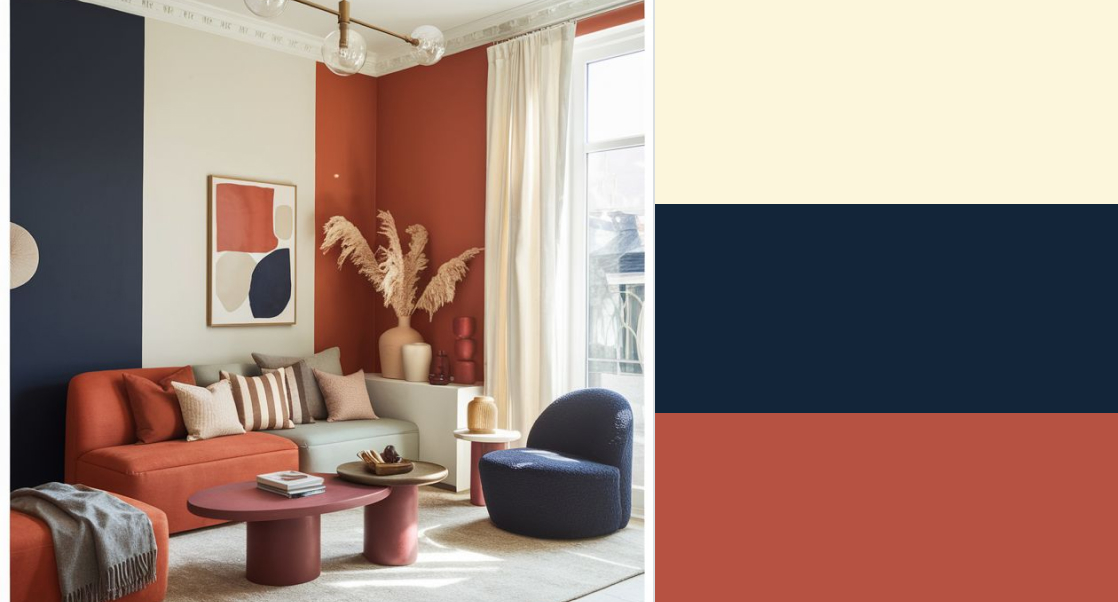
Did you know that color influences our emotions, perceptions, behaviors, and even physiological responses?
Yes, it absolutely does!
The right color can make a space feel more inviting and spacious, while the wrong one can create a sense of chaos and imbalance. Then again, choosing the right colors for your home isn’t always as simple as it seems. With countless shades and combinations to consider, it’s easy to feel overwhelmed.
Fortunately for you, we are here to help you in choosing the right color palette for your home.
Know The Mood And Function Of Each Room
The colors in your home should do more than just decorate.
Each room in your home serves a purpose, and the colors you choose should reflect that function and the room’s desired ambiance. For instance, soft, neutral tones are more suitable for bedrooms because of their calming and cozy nature. On the other hand, vibrant hues work well in kitchens or dining areas since they add energy and warmth to the space.
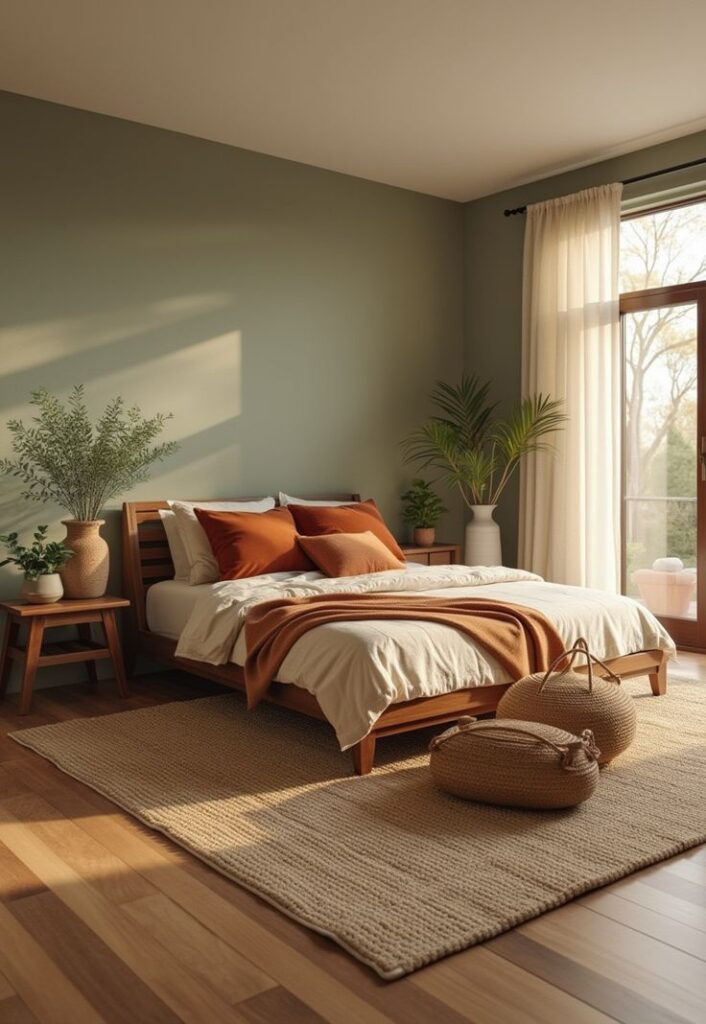
What Can Be Done?
- For the Living Room: Opt for warm, welcoming colors like beige, soft grays, or earthy tones to create a cozy and inviting atmosphere.
- For Bedroom: Choose calming hues like blues, soft greens, or muted lavender to promote relaxation and restful sleep.
- For the Kitchen & Dining Area: Bright and energetic colors like white, yellow, or soft pastels can make the space feel fresh and vibrant.
- For the Bathroom: Crisp whites, light blues, or subtle greys create a clean and spa-like ambiance.
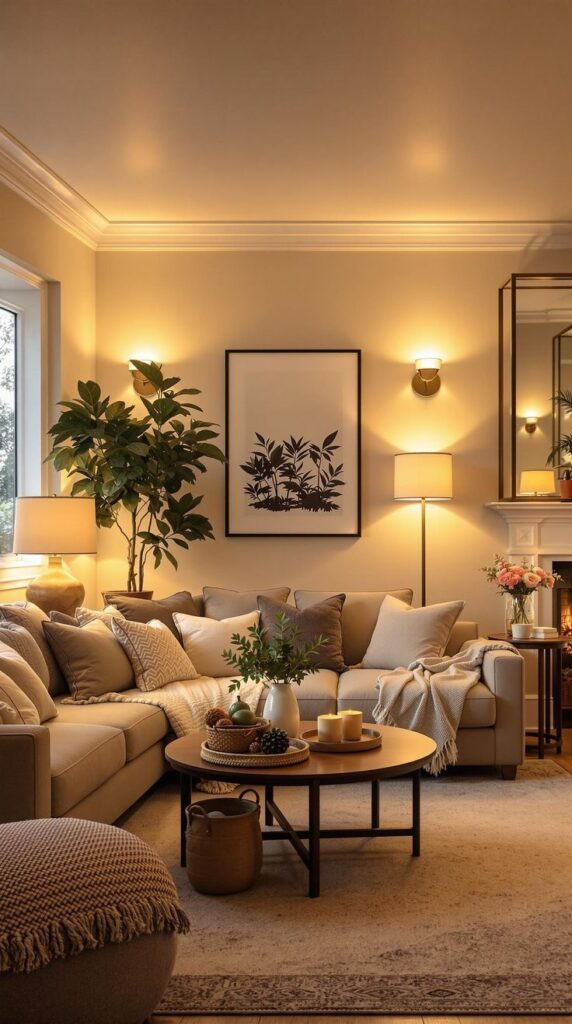
Consider Natural and Artificial Lighting
But is choosing a room’s color based solely on its purpose enough?
Not quite! Lighting plays a major role in how colors appear. Lighting influences a color’s intensity, warmth, and overall effect on the space. Natural light changes throughout the day, making colors appear brighter and more vibrant in the morning but softer and more muted in the evening. Artificial lighting further alters color perception depending on the type of bulbs used.
A color that looks perfect under bright showroom lights may seem dull in a dimly lit room.
So, What Should I Consider?
- North-facing rooms receive cool light, so warm tones can help balance the space.
- South-facing rooms have plenty of natural light, making almost any color work well.
- Artificial lighting, such as warm LED lights, can make cool tones look warmer, so adjust accordingly.
- Test paint swatches in different lighting conditions before making a final decision.
Do You Know About The 60-30-10 Rule?
The 60-30-10 principle is a timeless interior design rule used to create a balanced and visually appealing color scheme in any space.
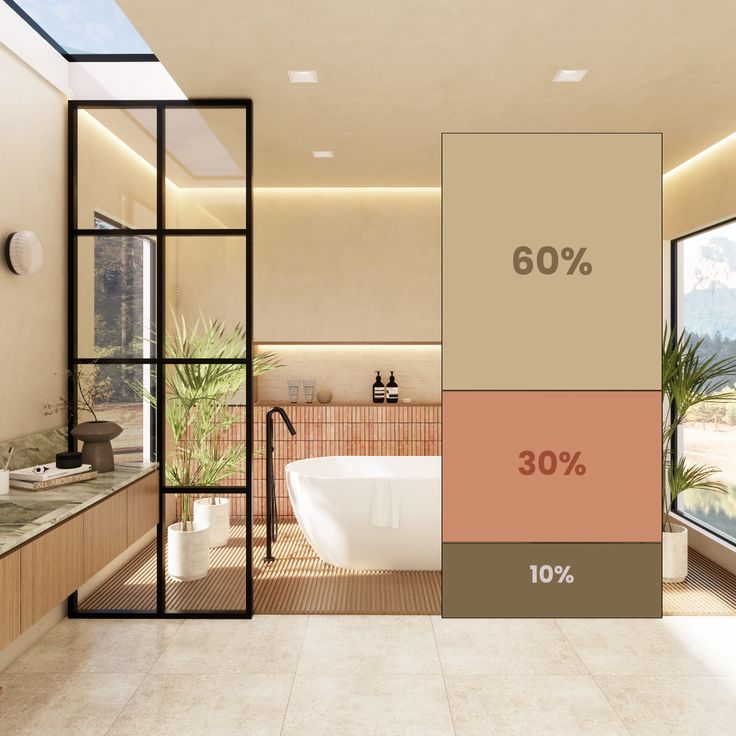
So, How Does It Work?
- 60% – Dominant Color: This will be the main color of the room, used for walls and large surfaces.
- 30% – Secondary Color: A complementary color used in furniture, textiles, or accent walls.
- 10% – Accent Color: The boldest shade used sparingly in décor items like cushions, artwork, or accessories.
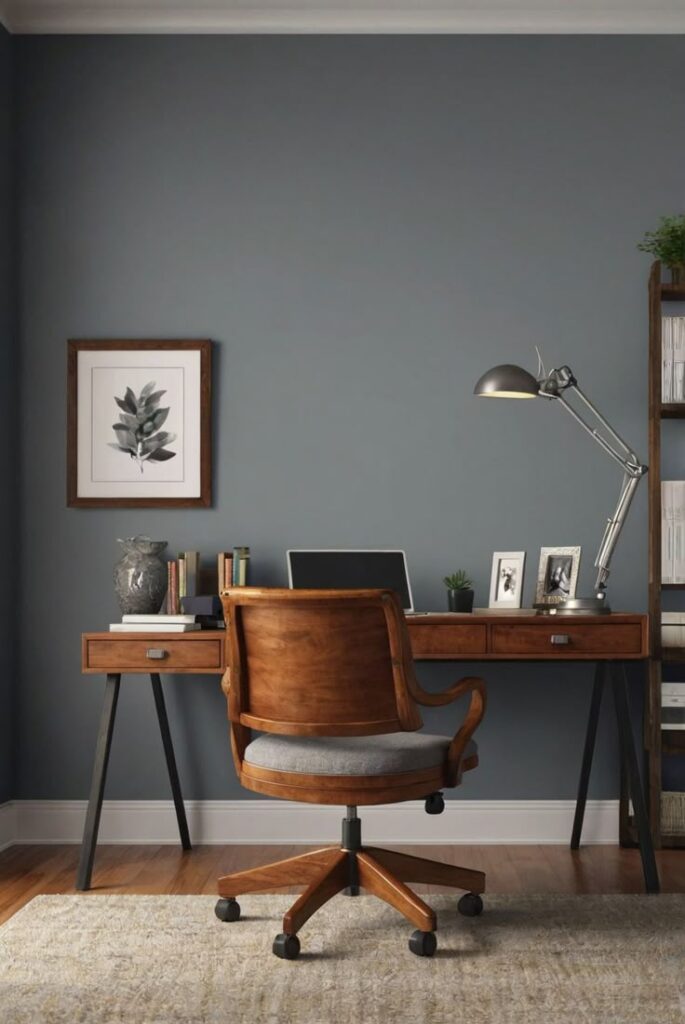
Understand Color Psychology
Colors influence emotions, behaviors, and perceptions.
Understanding color psychology before choosing the right color combination for your home will help you create spaces that align with the mood and functionality, making each room more inviting and purposeful.
What Should I Know?
| Colors | Mood & Effect |
| White & Neutrals | Clean, minimalist, and timeless. |
| Blue | Calm, peaceful, and ideal for bedrooms. |
| Green | Refreshing, balanced, and brings nature indoors. |
| Red | Energizing, bold, and great for dining areas. |
| Yellow | Cheerful and uplifting, suitable for kitchens and small spaces. |
| Gray | Elegant and versatile, works well in contemporary settings. |
Create a Mood Board
Before finalizing the right color combination for your home, you should gather inspiration from magazines, Pinterest, or nature. Creating a digital or physical mood board helps visualize how different colors work together.

Trust Your Personal Preference
All things considered, your home should be a true reflection of your personality, taste, and lifestyle. With the right color combination, it can be achieved. Design guidelines and color theories provide useful direction, no doubt, but they should never limit your creative expression.
At the end of the day, your home should bring you comfort, joy, and a sense of belonging. So, trust your instincts and choose colors that make you feel truly at home.
Frequently Asked Questions
How do I choose a color palette for my home interior?
To choose a color palette, start by identifying a base color, considering your furniture and décor, and using color theory to select complementary or analogous shades for a cohesive look.
Which color palette is best for small rooms?
Light colors such as white, beige, soft gray, and pastel shades make small rooms feel more spacious and open. Adding mirrors and good lighting can enhance the effect.
What are the most popular house colors in 2025?
Trending home colors for 2025 include earthy greens, warm neutrals, deep blues, and muted terracottas. These shades offer a modern yet timeless appeal.
How do I make my home look luxurious with colors?
Use rich tones like emerald green, navy blue, or charcoal gray with gold or metallic accents. Layering textures and using high-quality paint finishes can also enhance a luxurious feel.
How do I choose exterior house colors?
Consider your home’s architectural style, surroundings, and climate. Neutral shades like beige, taupe, and soft gray are timeless, while bold colors like deep blue or green add character.
What is the 60-30-10 rule in home color selection?
The 60-30-10 rule is a classic interior design principle:
- 60% of the room should be the dominant color (walls).
- 30% should be a secondary color (furniture, curtains).
- 10% should be an accent color (decor, accessories).
Which paint colors increase home value?
Neutral colors like white, light gray, and beige have broad appeal and can increase resale value. Homes with off-white kitchens and soft blue bathrooms often sell for higher prices.

